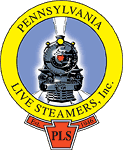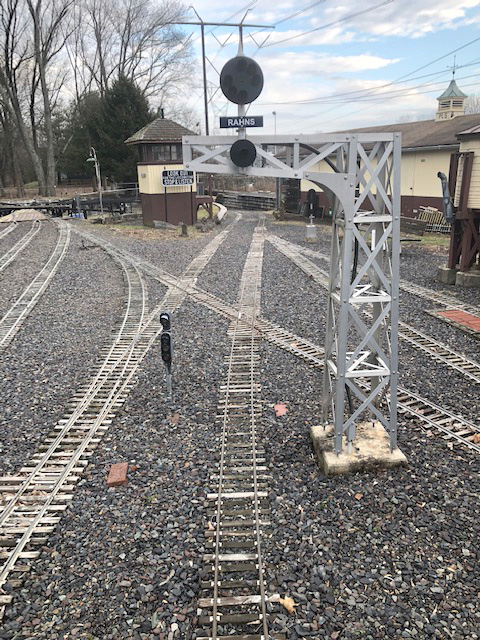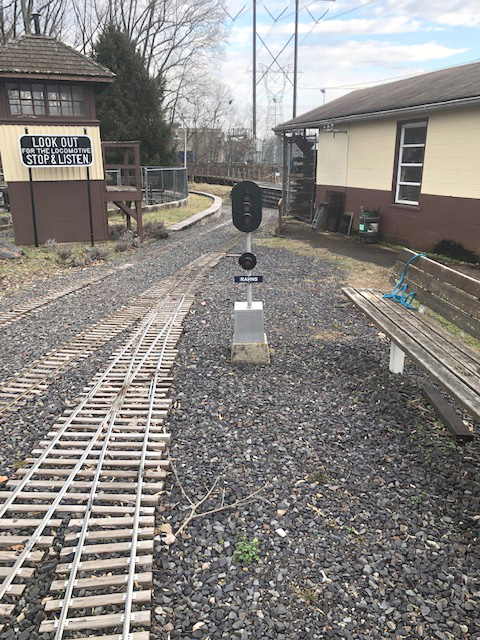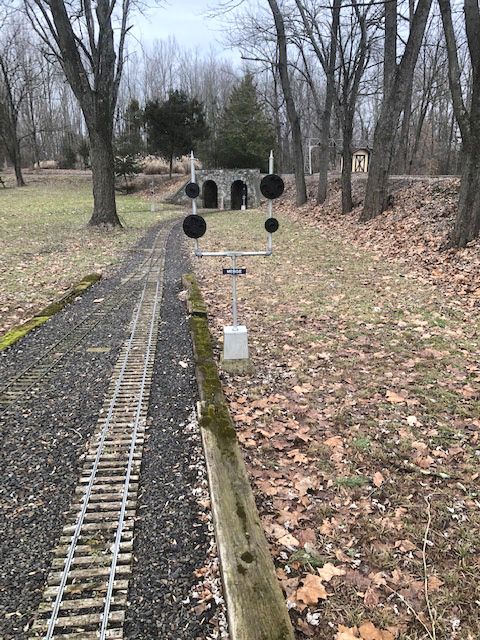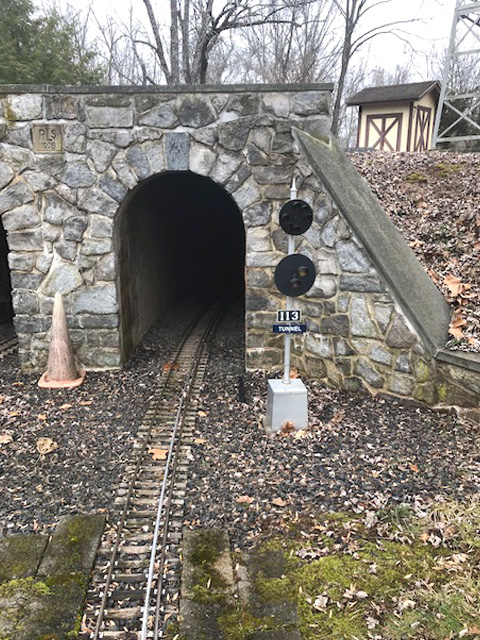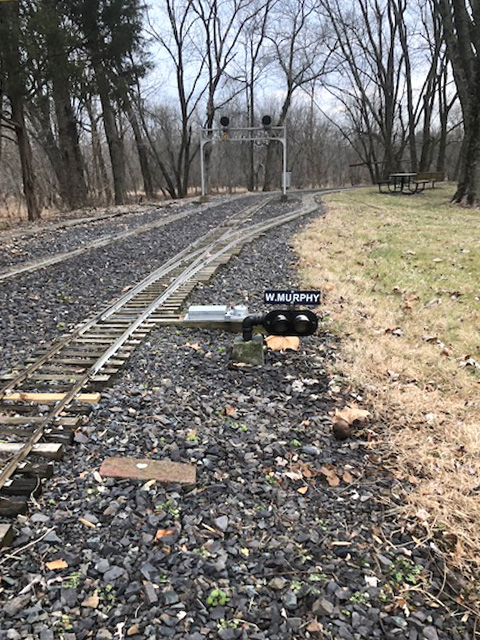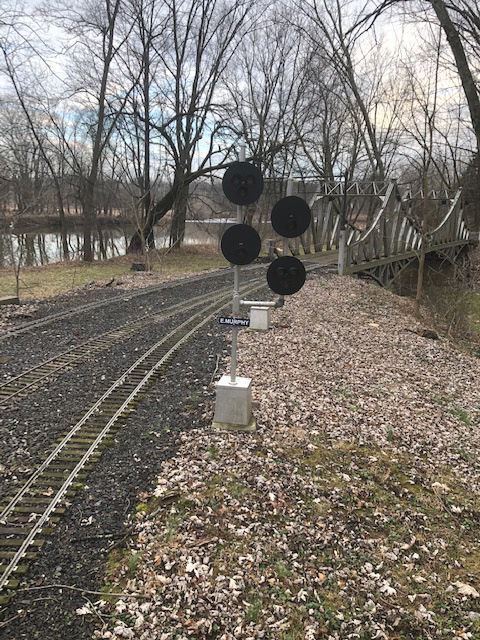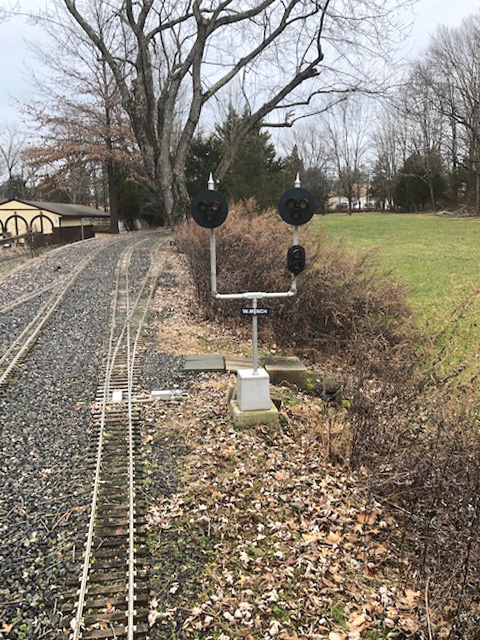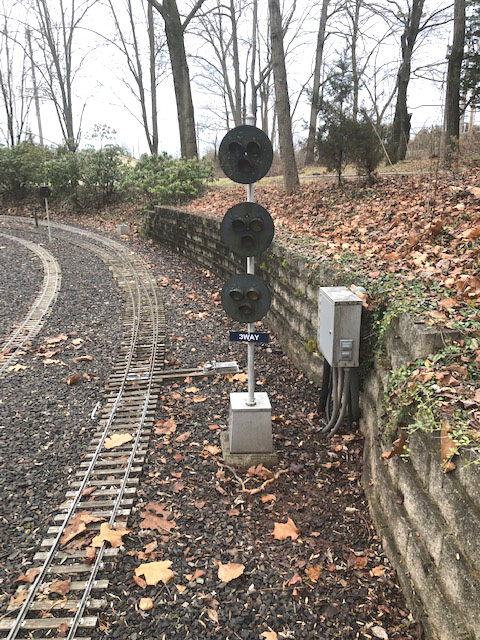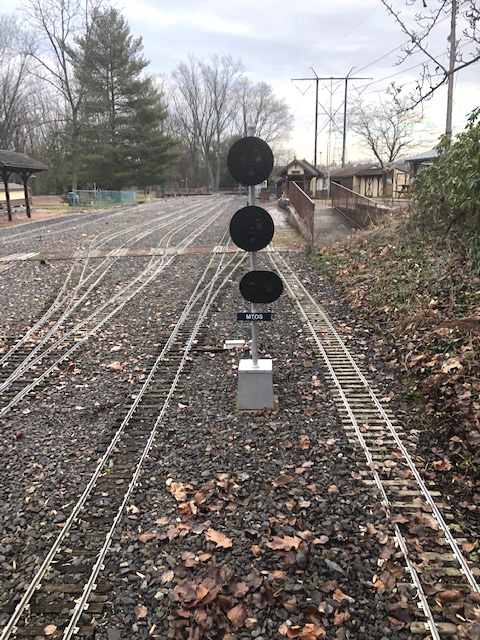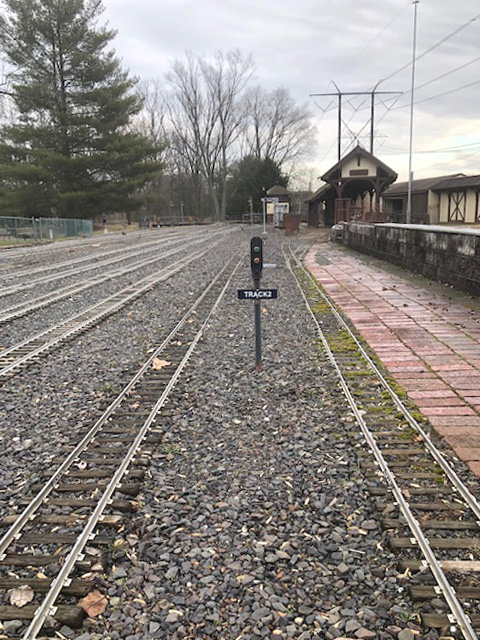Safety Rules Assessment
This guide compliments and supplements existing PLS operating rules. All operating members are encouraged to review this document, complete the accompanying written exam and return their exam results to the secretary. Please note, the exam is not pass/fail. No member’s operating privileges will be revoked based on his/her exam result. Rather, exam results will be evaluated to identify weaknesses in rules understanding and provide a means to reduce such weakness.
Approved by the PLS Board of directors November 18, 2023
Section 1 – PLS Operating Rules Suppemental
- Prior to the movement of a train equipped with brakes, the engineer must perform a standing brake test by applying and releasing the train’s brakes. He/she must determine that the brakes are applied and released on each car of the consist. Cars with inoperative brakes should be removed from the train.
- During initial movement of a train equipped with brakes, the engineer must make a running brake test to be certain that the locomotive/train has fully effective brakes before entering the main line.
- When left unattended, a locomotive/train must be secured against movement (e.g., train brakes applied, parking brake applied, wheels chocked (optional), propulsion disabled)
- At all times, a train must proceed at a speed no greater than that which will permit it to slow or stop safely to comply with signal indications or other trains occupying the track ahead. Speed should be adjusted downward to compensate for downgrades, curves and slippery rail conditions.
- Definition: RESTRICTED SPEED (Rule 80)
A speed that permits stopping within one half the range of vision short of:
- Other trains or equipment occupying or fouling the track
- Obstructions
- Switches not properly lined for movement
- Any signal requiring a stop
- Restricted Speed applies on all yard tracks.
- Reverse movements are not permitted on the main track unless preceded by a flagman. Prior to movement, the conductor or an appointed flagman
must first go back no less than 50 feet from the rear of the train and using hand signals (with or without a red flag or light), convey a “stop”
indication to any following train.
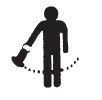 Swing horizontally at right angle to the track
Swing horizontally at right angle to the track
- The flagman must control the reverse movement using verbal/radio communications or hand signals to the engineer while maintaining the minimum 50-foot requirement. The reverse movement must be made at Restricted Speed.
- When verbal/radio communications are used to control a reverse movement, the flagman controlling the movement must specify to the engineer a distance to be travelled not exceeding the distance known to be clear.
- The reverse movement must stop in one-half the specified distance unless additional instructions are received by the engineer.
- The name of any fixed signal affecting the reverse movement must be communicated to the engineer (applies only in bi-directionally signaled territory which PLS currently has none)
- If any instruction is not understood or communications are lost, the reverse movement must stop immediately.
- If a train is remotely controllable, the engineer may also act as the flagman during a reverse move. However, all of the above duties of the flagman apply except for communications.
- An engineer must sound the whistle or horn (2 long, 1 short, 1 long) when approaching a public crossing at grade. The whistle or horn must be sounded/repeated until the crossing is occupied.
- If equipped, a train must sound the bell:
- When the locomotive/train is about to move
- When running through tunnels
- When approaching a station
- While approaching and passing a public crossing at grade
- When passing a train standing on an adjacent track
- In an emergency
- Trains must not stop on bridges or in tunnels except when complying with signal indication or in an emergency.
- A train operating at night must have a working headlight with a projection of at least 25 feet and have a red marker light on the end of the train.
- A train with passengers occupying more than two cars or with more than six total passengers must have a qualified conductor on the last riding car to enforce passenger and train safety. Any such train must have communication (preferably radio) between the engineer and conductor.
- On trains requiring a conductor, the engineer shall move the train only upon receiving a signal (hand or radio) to do so from the conductor.
- Engineers and/or conductors may discharge passengers for non-compliance with safety rules or unruly behavior.
- When operating a train at normal speed, the engineer must remain vigilant, looking out for stopped, disabled or derailed trains on adjacent tracks or other train’s crew members, MOW workers, pedestrians or obstructions fouling the track. Every attempt should be made to safely slow or stop in advance of such situations.
- While at the controls of a train, cell phone usage is prohibited.
- All main line powered & manual switches and all manual yard switches behave as spring switches when trailed through. Trains may trail through such a switch not lined for the movement without damaging the switch. Trains stopping while trailing through such a switch not lined for the movement must not take slack or reverse until the switch is manually lined.
- Note: There are 4 non-powered main line switches that have free-moving points (RAHNS (1), RAHNS (2), MERGE, and E. MURPHY). These switches may be trailed through regardless of the points position. Trains stopping while trailing through such a switch must not take slack or reverse until the switch is manually blocked and spiked.
- Note: There is 1 manual main line switch that may be trailed through regardless of the points position (E. MENCH). Trains stopping while trailing through this switch must not take slack or reverse until the switch is manually lined.
- Note: While permitted, trailing through a switch not lined for the movement should be avoided. If a switch is “trailed through” with the intention of immediately reversing back over the switch, the switch points should be visually checked to ensure that they sprang back and are not gapped. Also, the locomotive and/or lightweight cars may derail while trailing through a switch not lined for the movement.
Section 2 – PLS Railroad Territory
STATION PAGE (PLS 7¼″ Line)
| MP | STATION | INT | PS | PXING |
|---|---|---|---|---|
| 0.0 | RAHNS (Passenger Station) | X | ||
| 0.1 | RAHNS (FMTP Switch) (SI-1) | X | ||
| 1.1 | MERGE (FMTP Switch) (Yard Lead and Main) | X | ||
| 1.13 | TUNNEL | X | ||
| 1.2 | W. MURPHY (Siding) (SI-2&3) | X | ||
| 1.3 | E. MURPHY (FMTP Switch) | X | ||
| 1.4 | MERCER BRIDGE | |||
| 1.9 | W. MENCH (Siding) (SI-4&10) | X | X | |
| 2.0 | E. MENCH (TP Switch) | |||
| 2.1 | DRIVEWAY | X | ||
| 2.7 | PED1 (Pedestrian) | X | ||
| 3.25 | TRESTLE | |||
| 3.3 | YARD (Back Lead to Car Barn/Yard) (SI-5&6) | X | ||
| 4.25 | 3WAY (Main, Station, Yard) (SI-7) | X | ||
| 4.4 | MTOS (Main to Station Crossover) (SI-8) | X | ||
| 4.5 | PED2 (Pedestrian) | X | ||
| 4.6 | TRACK2 (to Station Track #2) (SI-9) | X | ||
Special Instructions (SI)
- SI-1: Trains departing Rahns Passenger Station (either track), pull up to the yellow tie and wait for the RAHNS signal to display a proceed aspect
- SI-2: W. MURPHY Signal does NOT convey block occupancy.
Green = lined for Main; Yellow = lined for siding - SI-3: W. MURPHY Route Select: Green: Main; Orange: siding
- SI-4: W. MENCH Route Select: Orange: Main; Red: siding
- SI-5: YARD Route Select: Green: Main; Red: Back Lead (Car Barn/Yard)
- SI-6: Trains operate at Restricted Speed approaching the dual gauge track
- SI-7: 3WAY Route Select: Green: Main; Orange: Station; Orange: Yard
- SI-8: MTOS Route Select: Orange: Main; Red: Station
- SI-9: TRACK2 Route Selection:
Green: Station Track #1 (under Station canopy); Orange: Station Track #2 - SI-10: W. MENCH PXING extends across lower Main Track at MP 3.7
Main Track Rules In Effect
| RULES | LOCATION BETWEEN/AT | TRACK |
|---|---|---|
| 251E | RAHNS MTOS | Main |
| 80 | All Sidings | Sidings |
| 80 | All Leads | Leads |
Yard Track Rules In Effect
| RULES | LOCATION BETWEEN/AT | TRACK |
|---|---|---|
| 80 | Yard | All |
Abbreviations
MP: Milepost; INT: Interlocking; E: East; W: West; PS: Passenger Station; PXING: Public Crossing at Grade; TP: Trailing Point; FMTP: Free-Moving Trailing Point
Notes
Stations in bold are interlockings.
The direction departing either Rahns Station or the Yard is East.
Section 3 – PLS Signal System
Overview
- The PLS RR is equipped with a fully automatic block occupancy detection system.
- Rule 251E: The signal system controls traffic in one direction only (eastward). Bi-directional operations are prohibited.
Signal Types (Permissive, Absolute)
- Permissive: Any signal with a single “head”. The most restrictive indication that a permissive signal can display is “Stop & Proceed”. Trains receiving this signal must stop, then proceed at restricted speed (reference the definition of Restricted Speed below).
- Absolute: Any signal with 2 or 3 “heads”. The most restrictive indication that an absolute signal can display is “Stop”. Trains receiving
this signal must stop and remain stopped until a more favorable signal is displayed. Note: All interlocking signals
are of type “Absolute”.

Interlocking Signals
- At locations where multiple routes converge to a single track, the signal system displays signals on a “1st come, 1st served basis”. The train arriving 1st receives the signal. All other interlocking routes will display a “Stop Signal”.
- At several interlocking locations there is a choice of routes. There are push buttons or toggle switches mounted in a box adjacent to the main track and in advance of the interlocking signal. Train operators utilize these push buttons/toggle switches to select the desired route. (reference the Station Page Special Instructions (SI) for the push button/toggle switch route selections). For any selected diverging route (off of the main track to a siding, Rahns station or yard lead), once a train clears the block on a diverging move, after a 7 second delay, the signal system will automatically re-align the route for the main track.
- A sign with the Interlocking’s name is affixed to the Interlocking’s signal. Reference the Interlocking Signal Photos folder for photos of all Interlocking signals.
Special Instructions
- Where signals are located on a “Goal” post bracket to display aspects for 2 tracks, the right-hand signal governs the track to the right,
the left-hand signal governs the track to the left.
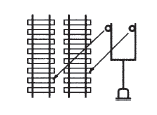
- W. MURPHY signal (MP 1.2) does NOT convey block occupancy. Aspects: Green: switch is lined for Main track; Yellow: switch is lined for siding
- Trains departing Rahns Passenger Station from either station track must pull up to the yellow tie and wait for the RAHNS signal to display a proceed aspect.
- The 2 head yard exit signal (dwarf) at the east end of the yard is an Absolute signal. The most restrictive indication this signal can display is “Stop”.
- Note: There is no signal protecting the merge of the 4¾″ main track and the 7¼″ back lead onto the dual gauge back lead adjacent to Bldg. #6. Trains are required to operate at restricted speed when approaching and occupying the dual gauge section of the back lead.
Imperfectly Displayed Signals
- Imperfectly displayed signals (one or more signal “heads” are dark or an invalid aspect is displayed) must be regarded as the most restrictive indication that can be given by that signal with the following exceptions:
- If only one indication is possible, this indication will govern. If more than one indication is possible, and it can be determined that all possible indications are more favorable than “Stop & Proceed”, trains may proceed at Restricted Speed.
Restricted Speed (Rule 80)
- A speed that permits stopping within one half the range of vision short of:
- Other trains or equipment occupying or fouling the track
- Obstructions
- Switches not properly lined for movement
- Any signal requiring a stop
Signal Rules

Name: Stop signal
Indication: Stop
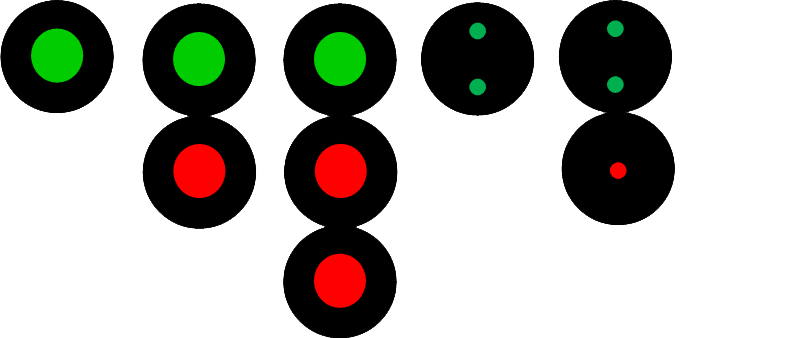
Name: Clear
Indication: Proceed
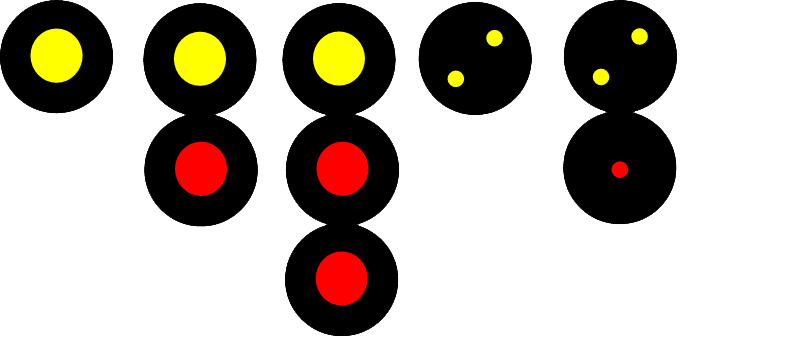
Name: Approach
Indication: Proceed prepared to stop at next signal

Name: Stop and proceed
Indication: Stop, then proceed at Restricted Speed
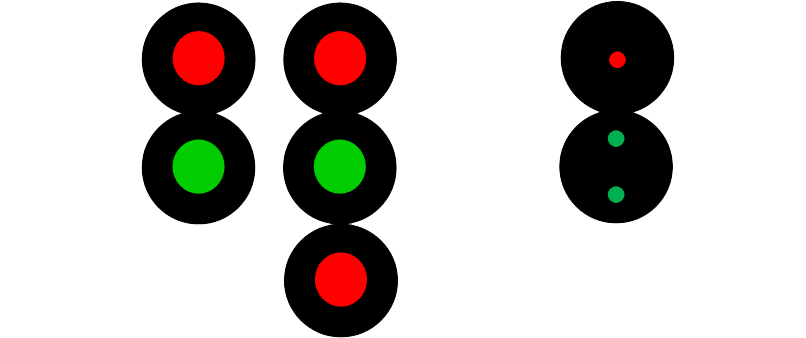
Name: Diverging Clear
Indication: Proceed through the diverging route
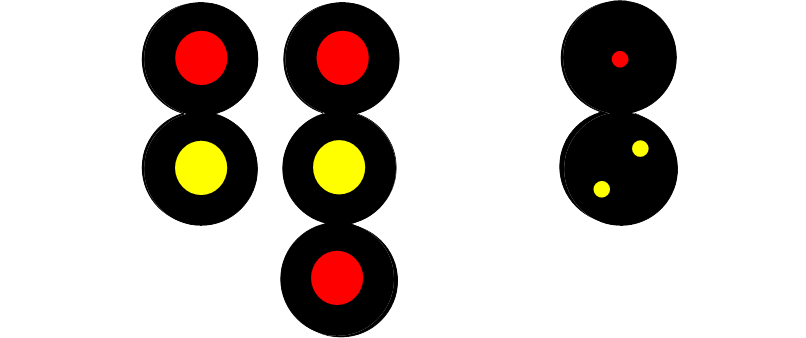
Name: Diverging Approach
Indication: Proceed through the diverging route,
prepared to stop at next signal

Name: Restricting
Indication: Proceed at Restricted Speed
